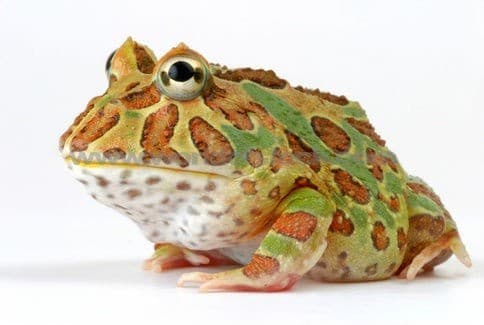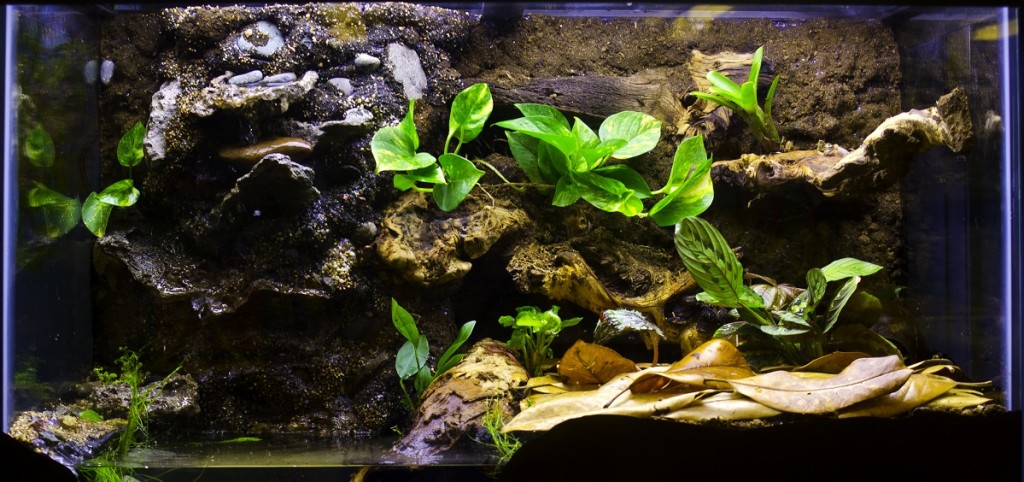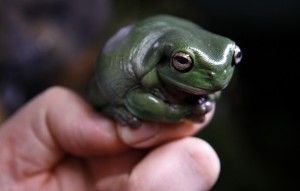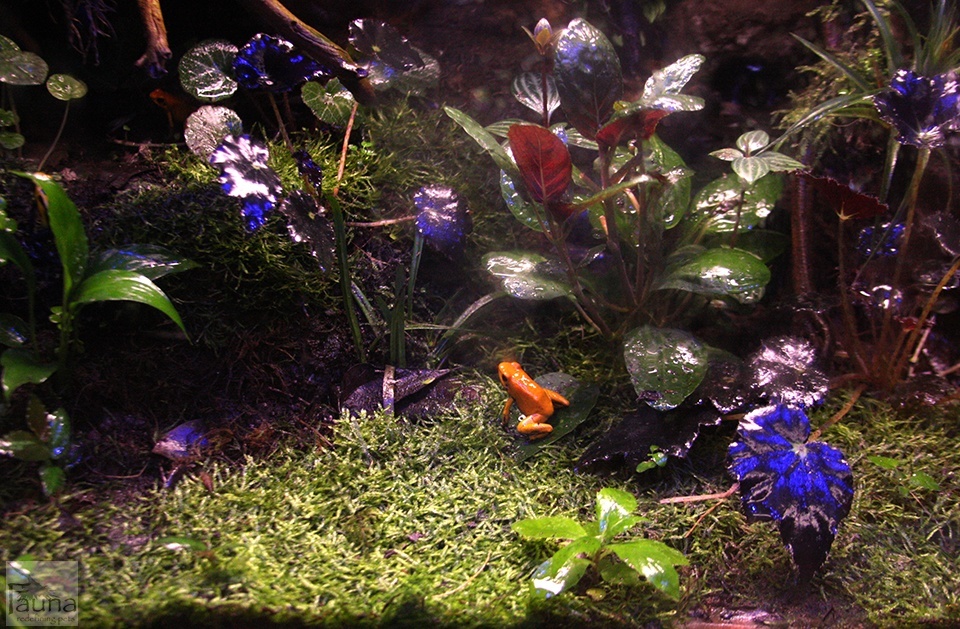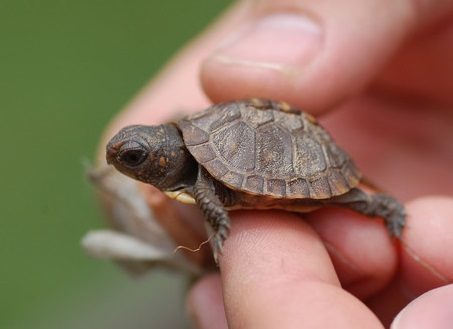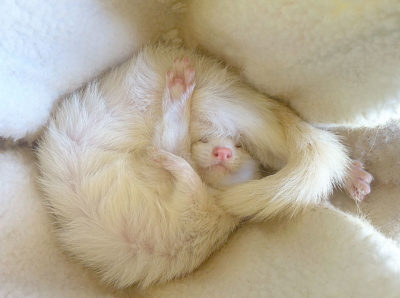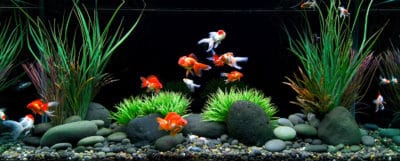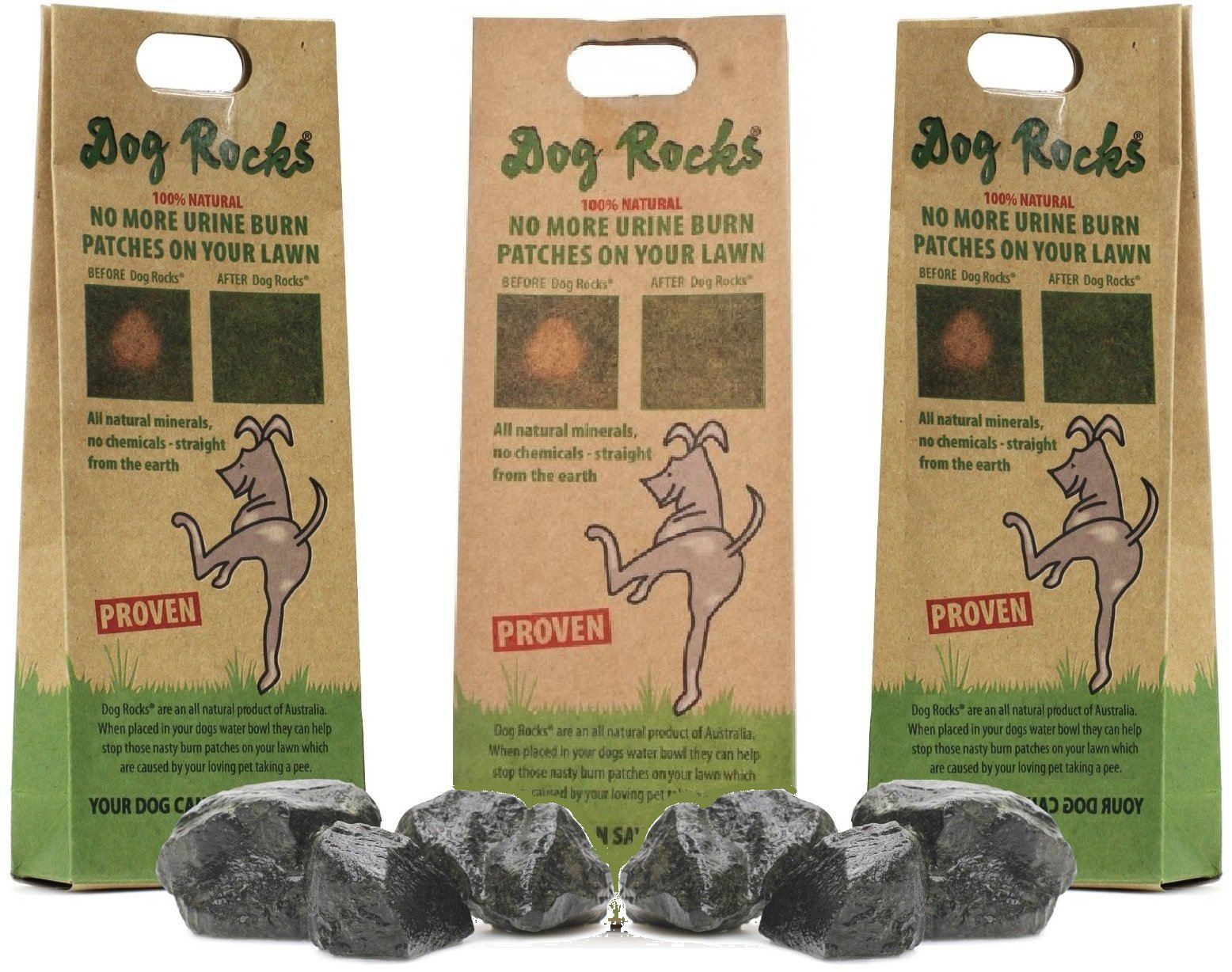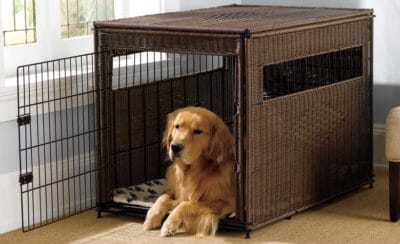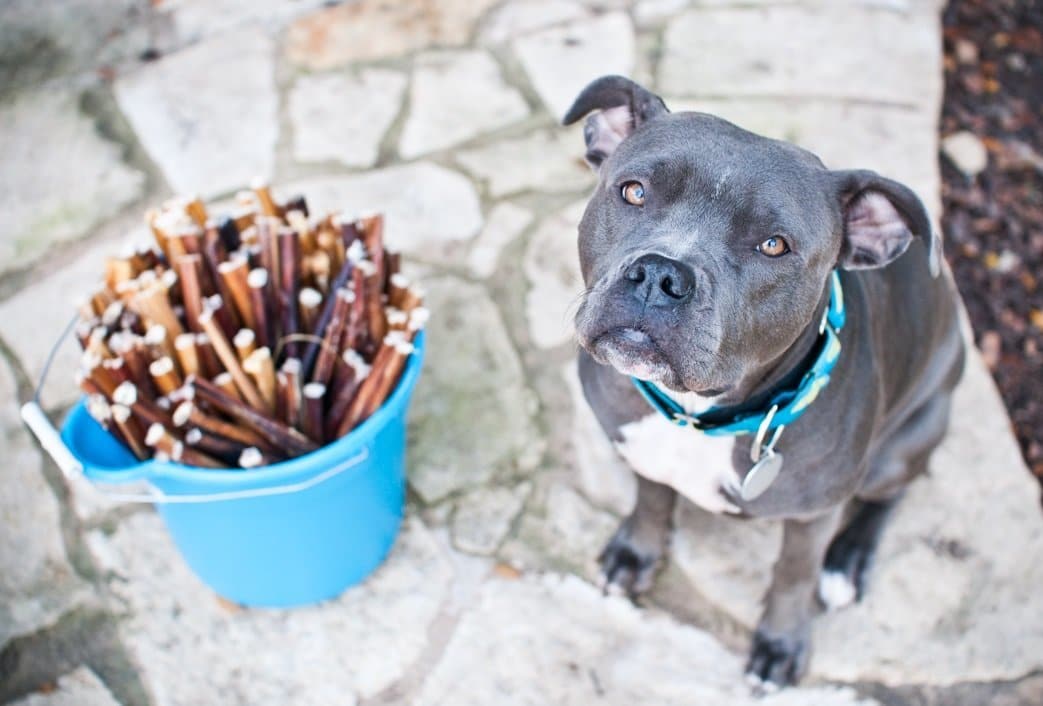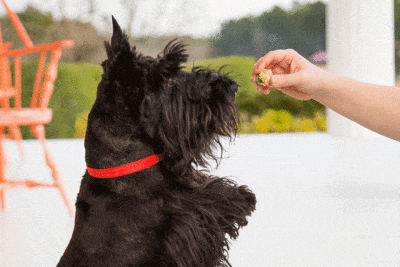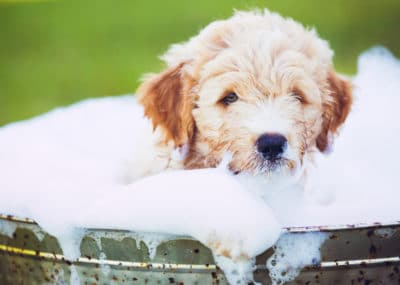Frogs are the most popular amphibian pet. With their goofy big eyes and silly grins, they are hard not to fall in love with. Once you get a few things down, like how to set up a terrarium environment and feeding the frog taking care of frogs becomes much easier. In this post, I’ll talk about how to take care of a frog and the ideal frog tank setup.
Pet supply stores usually have everything you need and there are also many online options to have things sent right to your home if you desire.
How to Take Care of a Frog: Top 7 Considerations
If you set up the right environment and choose your frog carefully, your pet frog could live as long as twenty years. There’s a lot of hopping a frog can do in twenty years. How to take care of a frog you ask? Here are the main things you need to do to provide for your frog:
1. Put Together a Good Tank
Setting up the tank is one of the most fun parts about being a frog owner, but this is the most difficult part of the whole being a frog owner. There are a few essentials when setting up a terrarium.
First you need a tank that either opens and at the top or in the front. Some species of frog do better with one over the other. The ideal frog tank will have two distinct sections for water and land areas. Also you need a canopy or some type of cover as well as a light source. We will discuss more about the frog tank in our next section.
2. Home Environment
Frogs will spend much of their time in the aquarium so you don’t need to worry about much here. One thing though is to keep their tank out of direct sunlight. Furthermore, you do not want to locate your frog tank by the kitchen or adjacent room.
Cooking fumes can hurt frogs. Cleaning products and aerosol products such as hair spray can also poison frogs so keep these far away from their tanks. These things aside, you can happily locate your frog tank in just about any room in your home or apartment.
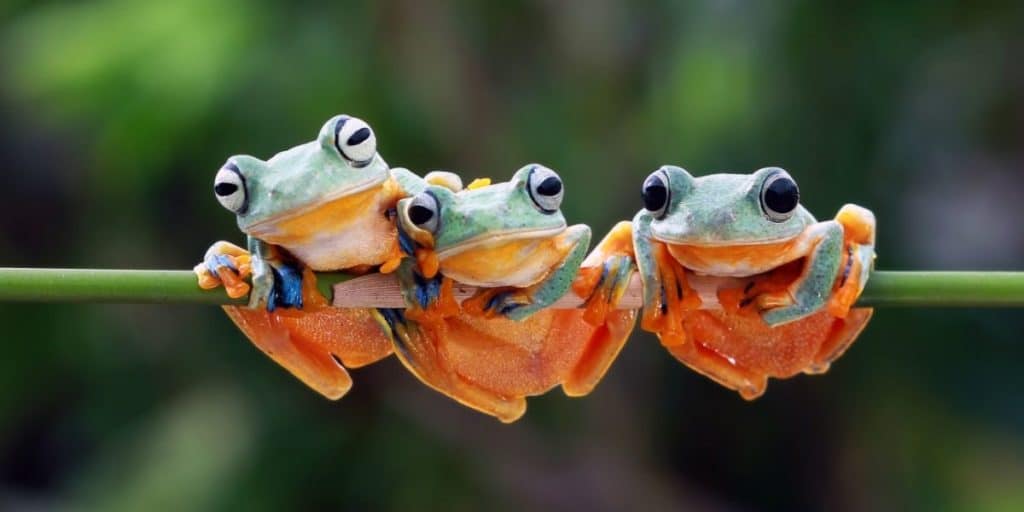
3. Exercise
This is why it is important to get a decent-sized tank. Some frogs can be pretty active at certain times of the day and will hop around and climb whatever you have set up for them. On the opposite end of the spectrum, there are those frogs who sit around and seemingly conserve every last bit of energy for feeding time.
Chasing down those crickets is a lot of work you know. As long as your terrarium is set up correctly for your species of frog, don’t worry about them getting enough exercise. They will move around if need be.
4. Feeding
Frogs are mostly carnivores and enjoy eating meat. They like their food alive and wriggling. The general rule of thumbs for frogs is that if it is alive and fits in their mouth it is snack time. Crickets, moths, fly larvae, worms, and caterpillars are all delicacies of the frog world.
Surprisingly, big frogs will even go for mice and other prey such as fish. Almost all big pet stores sell this type of food and usually provide containers for them to dwell in until its time to meet their destiny.
5. Clean Water
Its a good idea to include a water dish and/or a wading pool in your frog’s tank. The best thing to do is buy two wading pools so while one is being washed he has the other to use. Fresh, clean water is one of the ongoing considerations you need to keep in mind and must change regularly.
Dirty water, or not enough water, will not make for a happy frog. Frogs are amphibians so always keep that in mind. That means they’ll spend quite a bit of time in the water too. Some frogs are entirely aquatic and in this case you need a fish tank for them to dwell in. Frogs drink water through their skin, it is absorbed in an area known as the drinking patch. This drinking patch is located on their belly.
6. Grooming
Hygiene and cleanliness are a HUGE deal for frogs. Why? Because they absorb things through their skin. For example, if you just put hand sanitizer on your skin, or sunscreen, a pet frog could absorb these through his skin and get sick. Just be careful and never poison your frog.
- Before handling your frogs, wash your hands and dry them thoroughly before handling your frog. An extra rinse under the water is a good idea just to make sure all the soap is gone.
- Also, you’ll want to keep his tank as clean as possible so he doesn’t absorb a foreign substance on accident.
- Your frog will shed skin every once and awhile too. If he seems to not be shedding very fast or having trouble you may want to consult your vet. Unlike some pets, you don’t need to regularly brush frogs or anything like that.
They are pretty low maintenance as long as you follow the above pointers you are good to go.
7. Handling and Training
Most frogs do not like to be handled very much. It usually freaks them out. Some frogs are different though and will eventually grow used to being handled once they are all settled in. Frogs have delicate little bodies and should be handled with care. They do not respond to training so the personality of your frog is basically what you get. Don’t handle them too much or they will get annoyed.
Sometimes they will hop around if you set them down and some frogs are curious and like to explore. If you do decide to try and handle your frog it might squirm a lot so make sure you have a firm hold on him if you are holding him up high to prevent accidental injury if dropped.
If you got a frog for a little one, make sure they are under close supervision if they are handling the frog. Sometimes kids can be too rough for little froggies. In most cases, just observing the frog is fun enough.
Best Frog Tank Setup: Creating the Ideal Living Environment for your Frog
It is always a good idea to research the type of frog you are interested or talk with a specialist at the pet store before buying a frog. The main thing you want to known is how big the frog will get so you can plan accordingly.
- While baby frogs will do just fine in 2 to 5-gallon tanks, you’ll want to transfer them to larger quarters once they start getting bigger.
- A light or UV light directed at the tank will help your frog stay warm. Also, frogs love to bask in the light. So unless you are planning at taking him out into the sun for 20 minutes at a time throughout the day, you’ll definitely want a light.
- Some frog owners buy heat pads for under their tanks so he can get warm there and move to a cooler place when he wants to. Some types of frogs actually need these under tank heating pads or a submersible aquarium heater.
- A water pump and/or fake waterfall and/or mist maker is an optional frog tank enhancement for most species but they can be essential for others.
Always research your species of frog to see if it has special requirements.
Finding the Right Cover
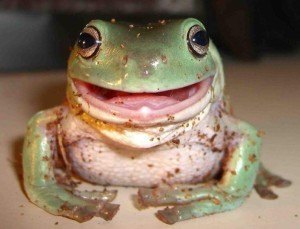
A frog tank should be fitted with a canopy and the artificial lighting should fit into the canopy of this tank. A substrate material (ground) of aquarium sand or gravel, pebblies, peat moss, or mulch like material is a good idea. Research which material is best for your type of frog.
For example, tree frogs do best with mulch and sand. If your frog isn’t entirely aquatic, in which case you would need a fish tank, you’ll want to provide the frog with a water dish. If your frog is partly aquatic, purchasing a water filter will help keep the water clean and your frog healthy.
Plants, branches, rocks, hidey huts, are all things frogs love to hop around and climb. These can be real or fake depending on your preference. It is a blast to set up a really cool-looking terrarium. Lastly, a carrier for your frog for vet visits or quarantines (cleanings, etc.) is an item you should purchase.
What Type of Frog Should I Get?
It’s also important for you to decide which type of frog or toad you should get as a pet. There are a lot of different species of frogs out there! Here is a fun video that gives you just a small handful of options:
Frog Care FAQ
Baby frogs are obviously much smaller than adult frogs and therefore have special eating requirements. For teeny frogs, the best thing you can get them is baby crickets or fly larva. Some people even feed their baby frogs bloodworms. If you go that route your need a shallow dish with water for the worms.
Certain types of frogs such as green frogs spend nearly their whole life in the water. That is despite the fact that green frogs have lungs and are able to breathe air. Then there are frogs that are the opposite, spending almost all their adulthood on land. Treefrogs are a great example of this type of frog. All frogs and toads, keep in mind, must eventually return to water to doing their mating business and lay eggs.
Frogs drink water directly through their skin. There is an area of their bodies that is called the drinking patch. This “drinking patch” is located typically on their bellies or the underside of their thighs. So basically, they just plop themselves in some shallow water and slurp it up.
There are about 4,500 species of frogs around the world. In the United States there are only about 100 species of frog. Sadly, since 1980, about 150 frog, toad, and salamander species have gone extinct. While most frogs require the same general care, some species have special requirements.

